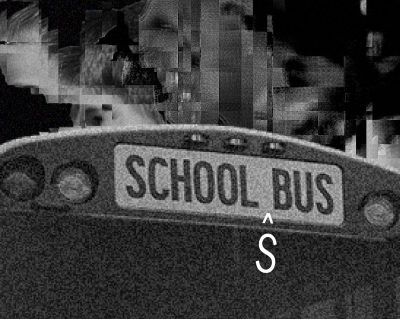The United States has a problem with its education system and it is only getting worse.

I grew up in the suburbs of Philadelphia where I attended Lower Merion High School, one of only two high schools in the Lower Merion School District. Four miles from my alma mater sits Overbrook High School, one of 57 high schools in the School District of Philadelphia.
Lower Merion is ranked No. 657 in the nation for public high schools and No. 14 in Pennsylvania by U.S. News and World Report. Of the 1,476 students, 62 percent of students took at least one AP exam, and 13 percent of the students are economically disadvantaged. Lower Merion has a graduation rate of 97 percent. The total minority enrollment? 30 percent.
Overbrook High School is ranked No. 13,345-17,792 in the nation for public high schools and No. 511-671 in Pennsylvania. Only 1percent of students took an AP exam. All of the students are considered economically disadvantaged. Overbrook has a graduation rate of 45 percent. The total minority enrollment? 96 percent.
Four miles. That’s the difference between one of the best public school districts in the country and one of the worst.
Unfortunately, bad things do happen to young Black and Brown students in Philadelphia.
Segregation in schools was supposed to be abolished in the 1954 landmark decision of Brown v. Board of Education. Yet the story of public schools in Philadelphia, compared to private inner-city schools and public suburban schools, is reminiscent of nearly every major city in the U.S. So, how do we fix it?

One opinion article cannot hope to cover every aspect of fixing the racial disparities in public education. Instead, here I will delve into one of the most used “remedies” for desegregation: busing.
Despite the decision in Brown v. Board of Education, desegregation of schools did not start right away. It was not until 1971 that it began to pick up speed, in the decision of Swann v. Charlotte-Mecklenburg Board of Education.
This decision brought busing into the spotlight, as it stated that “no rigid guidelines could be established concerning busing of students to particular schools.” This meant that busing, which had already been in use, was a possible avenue for desegregating schools.
Busing programs continued through the ‘70s and peaked in the early ‘80s, but slowly started to diminish in the ‘90s and 2000s. Now, many people are torn over whether busing’s impact was positive or not, and whether we should continue with the programs.
First, let us consider the positives of busing. Busing does, after all, increase racial diversity in schools, lending itself to the desegregation effort. Because of previous segregation, neighborhoods still tend to be segregated by race.
Unfortunately, there is a trend of rich, white people living in the suburbs, and poorer minorities living in the city.
Busing allows children in these still-segregated neighborhoods to attend schools outside their immediate community, and given that students do better in schools with greater funding, busing gives historically disenfranchised students more opportunities.
Busing also represents a change in attitude, a shift toward the direction of justice and equality. As Rev. Jesse Jackson said to The New York Times, “Busing is absolutely a code word for desegregation,” and certain NAACP officials in the past have supported busing policies and efforts as a means to create change.
However, a policy is only as good as its ability to be implemented, and the history of busing is riddled with cut corners and bad faith.
The primary goal of busing is to integrate public schools and diversify them, but this goal too often drowns out conversations about the quality of education received. Busing only directs kids to different schools, but has no impact on what happens at the school after the kids get there.
So, in this way, busing merely addresses the symptom produced by racial inequality, but it does nothing to address the problem itself. In fact, busing may actually make the problem worse.
In 1981, at the peak of busing, a Gallup poll found that 78 percent of white Americans opposed busing, and only 17 percent favored it. The implementation of busing, contrary to the desire of the majority of white Americans, caused a significant increase in “white flight,” which saw middle-class and rich white parents leave the city as it began to integrate, resulting in a decrease in community funding.
As a result, in certain cases, busing actually worked to increase segregation and took funding from schools that became majority Black.
The overwhelming majority of students who are bused for desegregation purposes are minorities. Students of color are then forced to attend schools outside their community, meet friends who live in entirely different neighborhoods and separate from their own neighbors, while white communities remain untouched.
The busing of only minority students also assumes that predominantly white schools are all good, while predominantly Black and Brown schools are all bad. As Sharif El-Mekki said, “Integration as a standalone solution undervalues the power of Black communities while overvaluing that of white communities.”
Despite its best efforts, busing actually works to address neither inequality in education nor our thoughts concerning education. Those in positions of power, who tend to be white in this country, make faulty decisions on behalf of Black and Brown students and then make little effort to see those decisions come into fruition.
Busing was and is a well-intentioned program addressing desegregation, but it has fallen short of the mark.
Instead, as we move forward into an age of increased awareness and focus toward social justice, we must take accountability for our unequal public education system. Busing would not have received such a negative response from white parents if the schools were truly equal, but they obviously were not.
I personally profited from the unequal distribution of education, as my high school was able to receive funding and resources that the inner-city public schools did not — my success was ultimately ensured by their oppression. If you are a Boston University student and you are reading this, then there is a chance you experienced the same thing.
Recognizing the differing levels of education between schools is the first step in solving the issue that busing tried, and mostly failed, to correct. Then, we must follow it with fully realized action to level the playing field and provide a brighter future for all Americans.





I remember when this was happening in Lower Merion schools. Frustrating and disturbing to realize that this continues and few care!! Enjoy your articles Joel – keep writing!
Very well written Joel. I went from a predominantly black elementary school (Ardmore Avenue) to Penn Wynne in the 60’s. It was one of the most traumatic experiences in my young life.